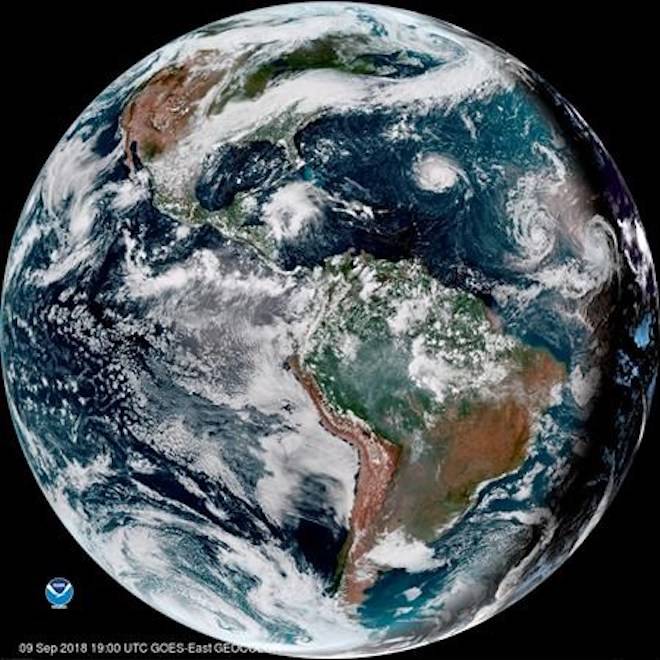Florence rapidly strengthened into a major hurricane on Monday, reaching Category 4 strength as it closes in on North and South Carolina,.
The first impacts were already being seen on North Carolina’s barrier islands Monday as dangerous rip currents and seawater flowed over the state highway. People were told to prepare to evacuate communities up and down a stretch of coastline already identified as particularly vulnerable to rising sea levels due to climate change.
Related: Big Island feels the effects of approaching Hurricane Lane
Related: B.C. woman shares experience of riding out Hawaii hurricane
For many, the challenge could be finding a safe refuge: If Florence slows to a crawl just off the coast, it could carry torrential rains up into the Appalachian mountains, causing flash floods, mudslides and other dangerous weather across a wide area.
“Florence is quickly becoming a powerful hurricane,” hurricane specialist Eric Blake wrote.
A warm ocean is the fuel that powers hurricanes, and Florence will be moving over waters where temperatures are peaking near 85 degrees (30 Celsius), Blake wrote. And with little wind shear to pull the storm apart, Florence’s hurricane wind field was expected to expand over the coming days, increasing its storm surge and inland wind threats, and raising the likelihood of life-threatening freshwater flooding.
“The bottom line is that there is increasing confidence that Florence will be a large and extremely dangerous hurricane, regardless of its exact intensity,” Blake said.
By 11 a.m. EDT on Monday, Florence had top sustained winds of 115 mph (185 kph). It was centred about 1,240 miles (2,000 kilometres) east-southeast of Cape Fear, North Carolina, and moving west at 13 mph (20 kph). Its centre will move between Bermuda and the Bahamas Tuesday and Wednesday, and approach the coast of South Carolina or North Carolina on Thursday, the National Hurricane Center said.
Hurricanes Isaac, which could hit Caribbean islands, and Helene, much farther out to sea, lined up behind Florence as the 2018 Atlantic season reached its peak.
The governors of North and South Carolina and Virginia declared states of emergency far ahead of the approaching storm. South Carolina Gov. Henry McMaster also suspended his campaign and asked President Donald Trump for a federal emergency declaration.
Navy ships off Virginia’s coast were preparing to sail out of the path, a North Carolina university has already cancelled classes and people have begun stocking up on plywood, bottled water and other supplies.
Red flags have already been flying on beaches, warning swimmers to stay out of the water as seas began kicking up. People rushed to get emergency kits ready, map out escape routes, fill sandbags and secure their homes.
“Pretend, assume, presume that a major hurricane is going to hit right smack dab in the middle of South Carolina and is going to go way inshore,” South Carolina Gov. Henry McMaster said. The state’s emergency management agency said it is “preparing for the possibility of a large-scale disaster.”
The Associated Press



